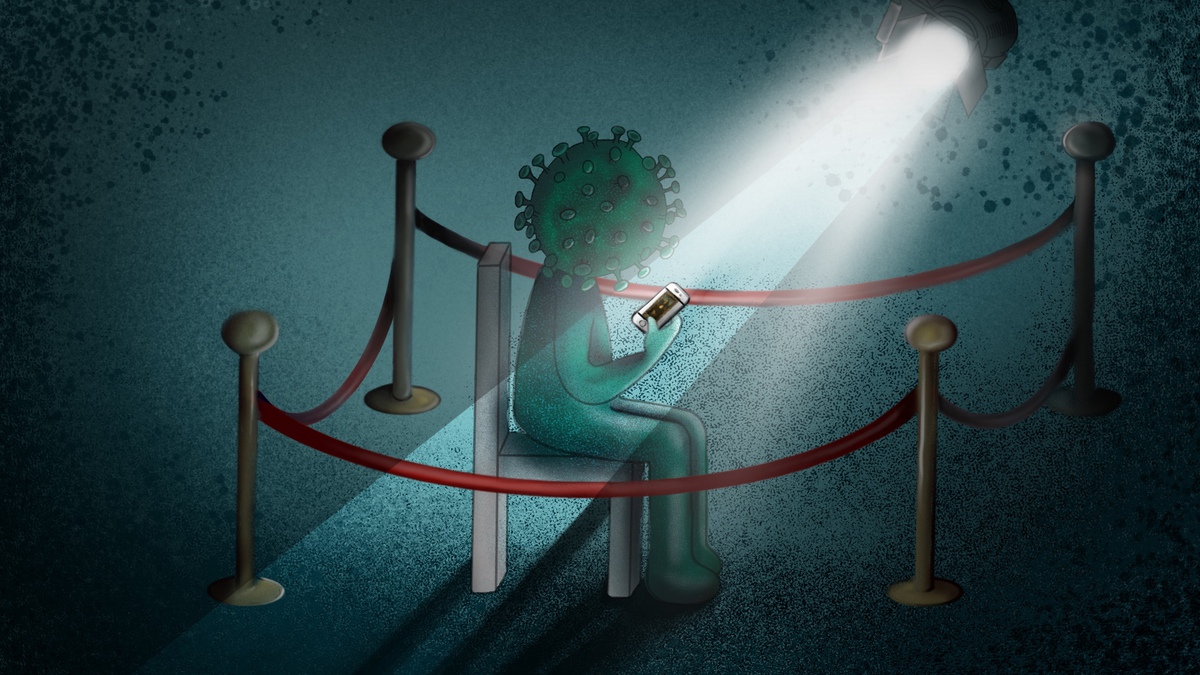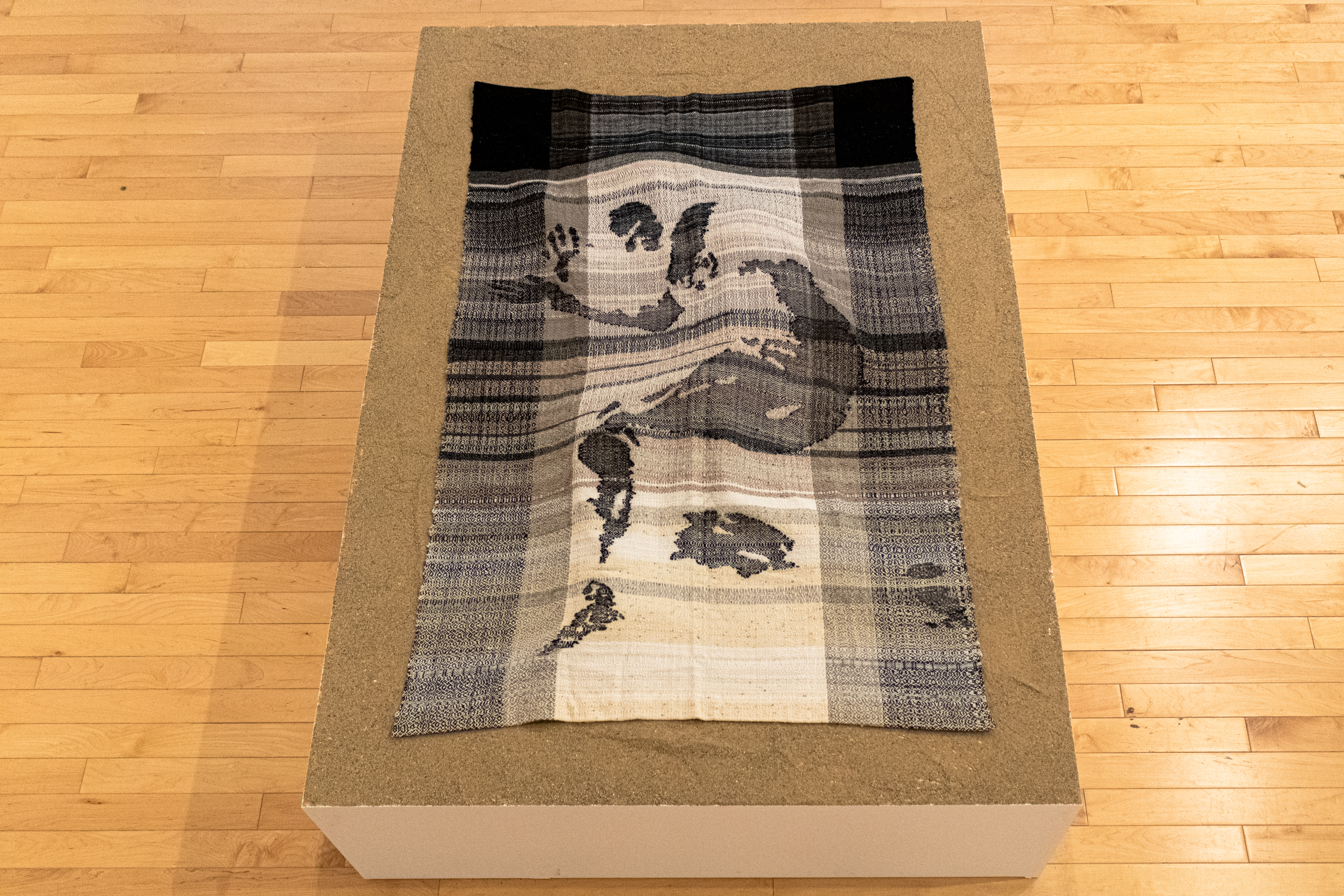
When all the museums around the world shut their doors this past March, The Covid Art Museum (CAM) opened theirs on Instagram. This is a revolutionary change in format. The founders, Emma Calvo, Irene Llorca, and José Guerrero, are all based in Barcelona and work in advertising. Early into the mandated quarantine, they noticed that the creation of art and art itself had not come to a stop, like the rest of the world, but increased exponentially. Wanting to capture the moment through art that reckons with COVID-19, they opened this account. The goals were simple: to connect people with art that everyone could relate to, and to keep it free and accessible to anyone with internet connection. Irene Llora elaborated in an email interview with F in August: “We could sense a movement here and asked ourselves, ‘what would happen with all of this art?’ We didn’t want [these] artworks to be forgotten.”
The museum’s inaugural post was on March 19, submitted by illustration artist Adrià Cuernolobo, who is also a close friend of the founders. The art “on display” in over 600 posts posts (as of late August), spans a wide variety of purposes and messages, from reimagining well-known images and paintings to feature elements of this time, to creating art that reminds the audience of public health guidelines. The account currently boasts over 129,000 followers. Some works that particularly jump out are this untitled piece by @ketyduran that reminds us of the great toilet paper scare of March 2020, “Fatigue” by @bernagulbey that beautifully captures the emotions and motions that healthcare workers go through everyday, and this untitled series of photographs by @karmanverdi that presents the many ghosts of loneliness.
The museum receives on average 200 works a day, and selects an average of 2-3 per day to post. When she spoke with F in August, Llorca explained that “to appear in the museum, artists can send their artworks through the online form that appears in the CAM profile or by tagging @covidartmuseum and #covidartmuseum when they post. Of all the works received or found, a selection is made to publish those that best reflect the current moment.”
The word “museum” itself was first coined in the early 17th century, from the Greek word mousa meaning muse, that later inspired mouseion, or seat of the Muses. Many ancient artists would appeal to the Muses at the beginning of their works. The very concept of the museum is rooted in European history and culture, and this is reflected still in the CAM, founded by three Spanish artists. Museums have always favored European artists and thus told history from their — largely colonial point of view. When asked about what efforts the founders of CAM are making to seek out art by artists of all genders, races, and identities, they stated that they “are lucky that the art world is very diverse, and receive works from more than 105 countries.”
“And,” Llorca continued, “digital artists use identities created by themselves, so many times, we don’t know their real name, race, or gender, and they prefer to keep it that way.” This strikes an important chord bringing museums into the larger conversation about Internet anonymity and art, and allows the art to be owned by itself instead of by museums. This diverges from the colonial history of the art world, which looted and stole art to be displayed in countries far from where the art originated. The art displayed in the CAM is submitted by the artist and as such remains art and not “artifacts.”
This museum is revolutionary, and has the power to change our contemporary understanding of museums. Traditionally, a museum’s identifying factor is that it’s a physical space where people go to view art and artifacts to learn and connect with history. This physical boundary is what The Covid Art Museum completely upends. It proves that a virtual museum is not only possible, but also may be preferred, as it is more accessible — you won’t need money to travel, enter the museum, or take a tour.
“Digitalization benefits communication, that is, we can know which works are more or less liked, thanks to the data, and people can interact with the artists, with the museum or with other visitors more easily,” Llorca also points out.
Looking at art these days is an exclusively digital experience. Traditional museums have struggled with this change. This phenomenon has been sped up in recent years by the increasing tendency of museum visitors paying to visit museums only to take pictures of the art. Have you ever gone to a museum on a crowded day and been pushed around by visitors so they can “get in and get out” snapping picture after picture of each piece of art, including the description of the pieces of art, feeling satisfied with this interaction? When we take a picture of a piece of art that is meant to be seen in person, how does it change the piece?
Now, in quarantine, museums themselves are now taking pictures of art work and then posting them on their website. This cannot be considered the same as viewing the piece of art in person. When we filter a piece of physical art through the lens of a camera and then a website, we add layers that mediate the image and content. These added layers of removal, the desire to retain a digital image of a physical work in memory, and the act of reviewing a work on a digital screen is what helps us to ask and address the following questions: What is the feeling of viewing a work of art through a camera and then on a website? It creates a secondary image, one that is not the same as the original piece of art. Is the photograph itself not a form of art? Is a picture of a piece of art not in itself an original work?
Looping back to the Covid Art Museum, the reason why its virtual platform works is because the art is being made with the intention of being viewed on a screen. Medium matters. This is huge, because it’s shifting the dynamic of how art is made. CAM centers the intent of an artist in a way that has been absent from museums.
Interestingly, Llorca shared that they “would love to do a physical exhibition sometime in the future.” This would pose the exact problems traditional art museums have been facing, but in reverse. However, Llorca and her partners seemed to be aware of this, acknowledging that “it would be a challenge exposing the works in a physical setting that have been created to be appreciated in the digital realm.”
Needless to say, this collection of art is a way of visually mapping this moment — one that is filled with confusion, hope, solidarity, loneliness, and deep contemplation for what is happening and what will come next. Llorca said they “were surprised by the reach we have had, the works we have received from countries so far away, and how people have connected with them.”
Who knows what’s going to happen to traditional museums after the pandemic, but The Covid Art Museum and similar digital spaces are definitely here to stay.







